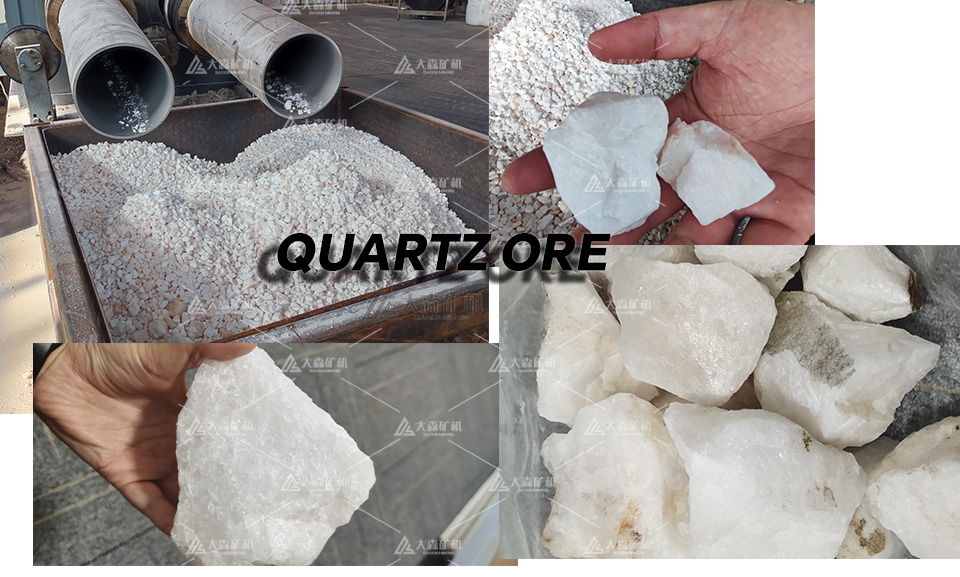How Can Dasen Help You with Quartz Ore Trade and Beneficiation Processes?
In the global mining industry, quartz and feldspar separation is a crucial process, and Dasen stands out as a highly professional entity with in – depth knowledge in both quartz ore trade and quartz ore beneficiation processes.
When it comes to the separation of feldspar and quartz, we are proficient in three main flotation methods.
Alkaline Flotation
This method operates in an alkaline pulp with a pH value ranging from 11 – 12. We use alkaline earth metal ions as an active agent and alkyl sulfonate as a collector. In this process, we perform reverse flotation, where quartz is preferentially floated. The addition of appropriate non – ionic surfactants can remarkably increase the recovery rate of quartz. Under alkaline conditions, the neutral complexes formed by metal ions and alkyl sulfonates, such as Ca(OH)+RSO3-, play a vital role. These complexes combine with free sulfonate ions, get adsorbed on the quartz surface, while a hydrated layer forms on the feldspar surface under high – alkali conditions.
Acid Flotation
The acid flotation technique is carried out in an acid slurry with a pH of 2 – 3.
Fluorine – containing Flotation: With strong acidity and the participation of fluoride ions for activation, cation collectors are employed to preferentially float feldspar. Adjusting the pH value of the slurry solution is the key to achieving flotation selectivity. When pH = 2, quartz is near its zero – electric point, while feldspar, with a general zero – electric point of pH = 1.4 – 1.7, has a negatively charged surface under the activation of fluoride ions, and its electric potential increases while the quartz surface is uncharged. Thus, amine cations first adsorb on the feldspar surface, making it hydrophobic.
Fluorine – free Flotation: Under strong acid conditions, we use a combination of an anionic collector (dodecyl sulfonate) and a diamine cationic collector. The anionic collector complexes with the diamine collector adsorbed on the feldspar surface, forming a co – adsorption that improves the hydrophobicity of the feldspar surface.
Neutral Flotation
In a neutral medium, both feldspar and quartz are negatively charged, but there are still locally positively charged areas on the quartz surface. Oleate ions have a small amount of adsorption with the help of electrostatic force and hydrogen bonds, yet this adsorption is unstable. Sodium hexametaphosphate and other inhibitors can remove the surface – adsorbed collector oleate. Feldspar’s adsorption of oleate is mainly through the chemical adsorption of Al3 +, which is relatively firm and cannot be removed by sodium hexametaphosphate. Although the amount of Al3 + on the feldspar surface is small and its hydrophobicity is limited, oleate ions on the feldspar surface can act as anionic active particles to adsorb amine cationic collectors. These collectors are firmly adsorbed on the feldspar surface, enabling feldspar to float out preferentially, thus achieving the separation of feldspar and quartz.
Whether you are engaged in quartz ore trade or need of a reliable and efficient quartz ore beneficiation solution, Dasen is here to offer you comprehensive services and tailor – made strategies. Contact us today to explore the endless possibilities in the world of quartz.
Whatsapp:+86 133 1927 7356
Email:[email protected]

